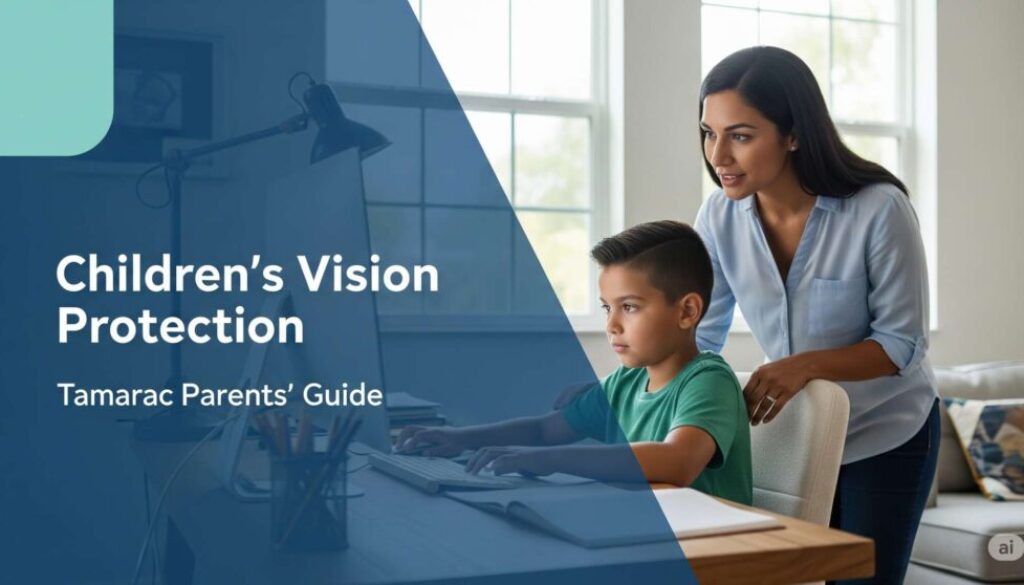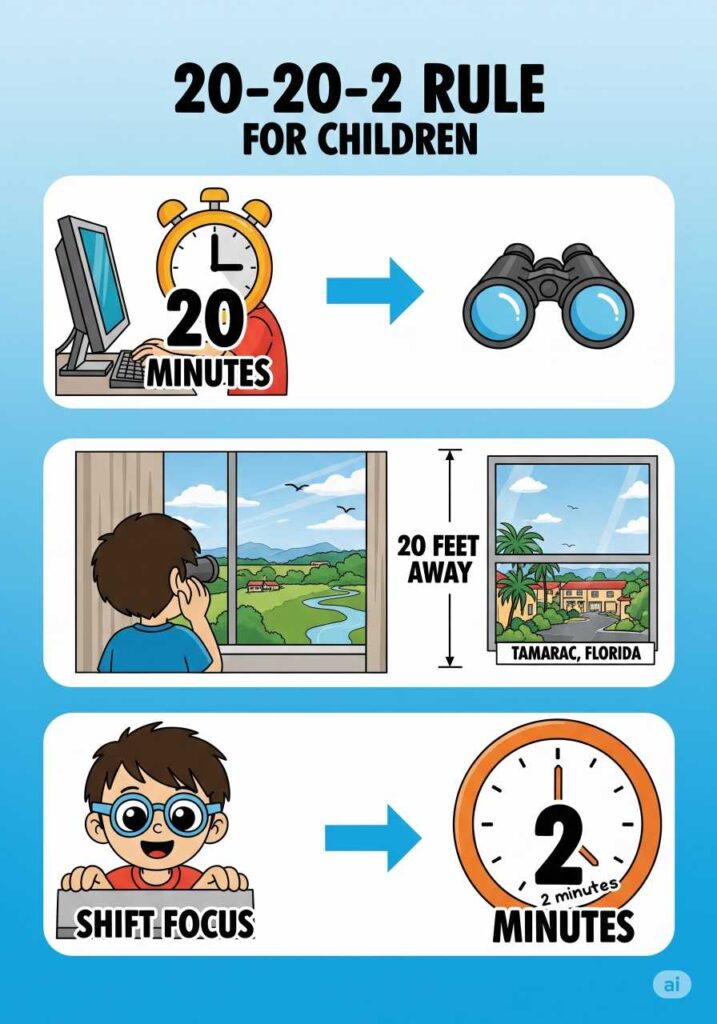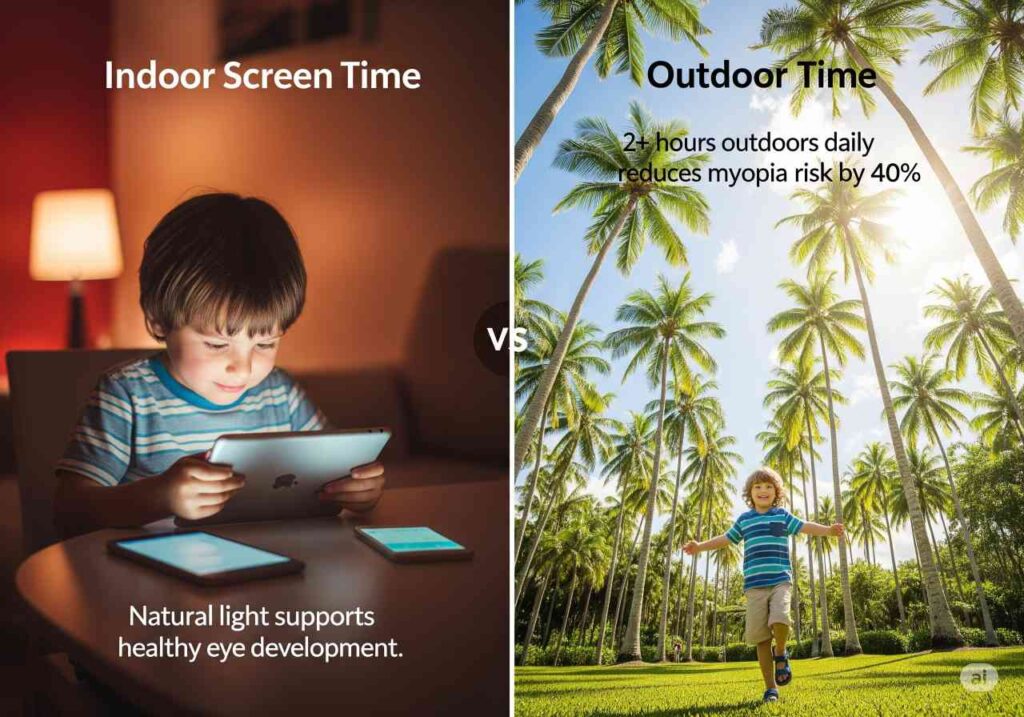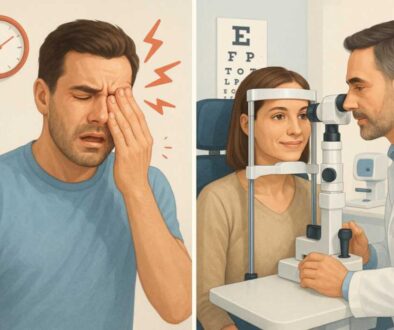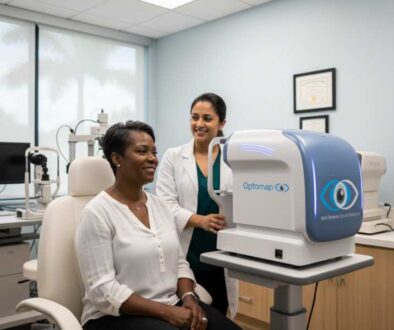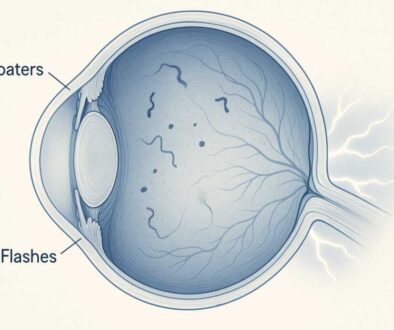Screen Time and Children’s Vision: A Tamarac Parent’s Action Plan
Protecting Your Child’s Eyes in South Florida’s Digital Age – Expert Guide to Digital Eye Strain in Kids
As a Tamarac parent, you’ve likely noticed your child’s screen time has increased dramatically over the past few years. With children aged 8 to 12 now averaging 5 hours and 33 minutes of entertainment screen time daily, and teens spending approximately 8 hours and 39 minutes per day on screens, digital eye strain in kids has become a pressing concern for families in our community. Understanding how to protect children’s vision in Tamarac while navigating today’s digital learning environment is crucial for their long-term eye health and academic success.
Understanding Digital Eye Strain in Kids: A Growing Concern for Tamarac Families
What Every Parent Needs to Know About Computer Vision Syndrome and Children’s Vision in Tamarac
Digital eye strain in kids, also known as Computer Vision Syndrome, affects approximately 50-60% of children who use digital devices regularly during the current era. Just two hours of continuous device usage can lead to digital eye strain in kids, and these issues compound over time if left untreated. For Tamarac families where nearly 94% of children’s screen time now stems from virtual classrooms and homework, understanding these symptoms is essential for protecting children’s vision.
Common Signs Your Child May Be Experiencing Digital Eye Strain:
Digital eye strain in kids manifests through various symptoms that Tamarac parents should monitor:
- Eye discomfort and fatigue – Children may complain their eyes feel “tired” or “heavy”
- Frequent headaches, especially after school or screen time
- Blurred or double vision when looking at distant objects
- Dry, red, or watery eyes
- Frequent eye rubbing or blinking
- Neck and shoulder pain from poor posture
- Difficulty concentrating on schoolwork
- Squinting when looking at screens or distant objects
Children with eye fatigue may complain of headaches, eye pain, or feeling tired. They may lose interest in tasks such as reading, which can significantly impact their academic performance here in Tamarac schools.
The Growing Myopia Crisis: Impact on Children’s Vision in Tamarac
Why Tamarac Parents Should Be Concerned About Kids’ Digital Eye Strain
Myopia or nearsightedness is increasing at a significant rate in children globally. Recent comprehensive research projects that approximately 39.8% of children and adolescents worldwide will be myopic by 2050, with an estimated 740 million children affected. The global prevalence has increased substantially from 24.3% in 1990 to 35.8% in 2023.
Recent studies show that children who engage in more than 3 hours of daily screen use show a higher likelihood of developing myopia compared to peers who spend significantly less time using devices or who spend more hours outdoors. This is particularly concerning for protecting children’s vision in Tamarac, where the demands of digital learning have become a permanent fixture in our children’s education, potentially contributing to digital eye strain in kids.
The Connection Between Screen Time and Myopia Development
Digital screen time has also been considered a potential modifiable environmental risk factor that can increase the risk of myopia progression. When children focus intensely on screens at close distances, their eyes work harder to accommodate, potentially leading to:
- Accelerated myopia progression in children already nearsighted
- Earlier onset of myopia in children with family histories
- Increased risk of high myopia and associated complications later in life
Protecting Children’s Vision in Tamarac: A Comprehensive Action Plan
Evidence-Based Strategies to Combat Digital Eye Strain in Kids
1. Implement the Enhanced 20-20-2 Rule
Every 20 minutes, pause for 2 minutes to focus 20+ feet away. This enhanced version of the traditional 20-20-20 rule gives your child’s eyes adequate time to relax and reset their focusing muscles.
Practical Application for Tamarac Families:
- Set a timer on your child’s device or use apps that remind them to take breaks
- During breaks, encourage looking out the window at distant objects
- Use this time for quick stretches or movement
2. Optimize Your Home Learning Environment
Position desks perpendicular to windows to maximize South Florida’s natural light while minimizing glare. The abundant sunshine in Tamarac can work to your child’s advantage when properly managed.
Screen Positioning Guidelines:
- Hold phones 1 foot away; sit 2 feet away from laptops and desktops; and encourage children to sit 10 feet away from the television
- Keep screens 20–24 inches from eyes (arm’s length)
- Align monitor tops at eye level to prevent neck/eye strain
3. Prioritize Outdoor Time in Tamarac’s Climate
Research shows that spending at least two hours a day outside can help reduce myopia onset or slow its progression. Tamarac’s year-round outdoor weather provides an excellent opportunity for this protective activity.
Local Outdoor Opportunities:
- Visit Tamarac Community Center’s outdoor facilities
- Utilize the walking trails at Caporella Park
- Encourage outdoor sports at local schools and rec centers
- Plan regular family activities at nearby parks and green spaces
4. Establish Healthy Screen Time Limits
Age-Appropriate Guidelines for Tamarac Families:
- Under 18 months: No screen time, except for video chatting with family and friends
- 18-24 months: Only high-quality educational media with parental engagement
- Ages 2-4: Maximum 1 hour per day of high-quality programming, co-viewed with parents
- Ages 5-17: Limit non-educational, recreational screen time to no more than two hours per day
- All ages: At least an hour before bedtime, put the digital devices away
5. Create Eye-Healthy Homework Habits
Lighting and Environment:
- Reduce screen brightness to match the surrounding brightness and set contrast to around 60-70%
- Use task lighting to reduce contrast between the screen and the surroundings.
- Apply anti-glare screen covers to reduce the amount of light reflected from the screen.
Encourage Conscious Blinking: When staring at a screen, people blink less frequently — only about one-third as often as they normally do. Teach your child to blink more consciously during screen time to prevent dry eyes.
When to Seek Professional Care for Children’s Vision in Tamarac
Protecting Kids from Digital Eye Strain Requires Expert Guidance
Regular Eye Exams: Your First Line of Defense
Children should get a comprehensive eye exam starting at 6 months old, 3 years old, and before kindergarten. Children may not complain about their vision because they don’t know what “good vision” is supposed to look like.
Recommended Eye Exam Schedule:
- 6 months: First comprehensive exam
- 3 years: Pre-school screening
- Before kindergarten: Essential before starting school
- Annually thereafter: Ongoing monitoring during school years
Warning Signs That Require Immediate Attention
Schedule an appointment with a Tamarac pediatric eye care specialist if your child experiences:
- Persistent headaches after screen time
- Complaints of blurred vision
- Frequent eye rubbing
- Sitting too close to screens consistently
- Squinting or covering one eye
- Difficulty reading the board at school
- Sudden changes in academic performance
Advanced Options for Managing Digital Eye Strain in Kids
Specialized Treatments Available for Children’s Vision in Tamarac
Your doctors at West Broward Eyecare now have FDA-approved methods to slow down the increasing myopia in children. These advanced treatments include:
Orthokeratology (Ortho-K)
Specially designed contact lenses worn overnight to temporarily reshape the cornea, providing clear vision during the day while slowing myopia progression.
Multifocal Contact Lenses
Specialized treatments like Ortho-K or low-dose eye drops can slow myopia progression, offering hope for children’s vision protection in Tamarac, whose digital eye strain in kids shows signs of rapidly advancing nearsightedness.
Low-Dose Atropine Therapy
FDA-approved eye drops that have shown significant success in slowing myopia progression in children.
The Science Behind Digital Eye Strain in Kids
Latest Research on Children’s Vision and Screen Time Impact
Recent Research Findings
A recent comprehensive meta-analysis of 276 studies involving 5,410,945 participants from 50 countries shows that the global prevalence of childhood myopia has increased substantially: from 25.3% in 2001-2010 to 29.7% in 2011-2019, and dramatically to 35.8% in 2020-2023. This most recent surge is attributed partly to the COVID-19 pandemic and the transition to remote-based learning.
The DES prevalence amongst children alone rose to 50–60% in the COVID-19 era, with symptoms expanding to include recent onset esotropia and vergence abnormalities as part of the DES spectrum. A comprehensive meta-analysis of 103 cross-sectional studies with 66,577 participants found that approximately 66% of all screen users experience some degree of computer vision syndrome.
Understanding the Physiological Impact
Studies have shown that over time, certain bands of blue light may be harmful to the light-sensitive retina of the eye. While the research is ongoing, many eye care professionals recommend blue light filtering as a precautionary measure.
Creating a Family Vision Health Plan
Step 1: Assess Current Habits
- Track your child’s daily screen time across all devices
- Note symptoms and when they occur
- Evaluate the current home learning setup
Step 2: Implement Gradual Changes
- Start with the 20-20-2 rule
- Adjust screen positioning and lighting
- Increase outdoor time by 15-20 minutes daily initially
Step 3: Monitor and Adjust
- Keep a symptom diary
- Regular check-ins with your child about eye comfort
- Schedule professional eye exams as recommended
Step 4: Involve the School Community
- Discuss digital eye strain awareness with teachers
- Advocate for regular vision breaks during virtual learning
- Share resources with other Tamarac parents
Technology Solutions for Healthier Screen Time
Apps and Tools for Managing Digital Eye Strain
Break Reminder Apps:
- EyeCare: Reminds users to take regular breaks
- Stretchly: Provides break reminders with eye exercises
- Time Out: Customizable break scheduling
Blue Light Management:
- Built-in night mode settings on devices
- Blue light filtering software like f.lux
- Screen protectors with blue light filtering
Ergonomic Equipment Recommendations
- Adjustable desk heights for proper screen positioning
- Document holders to reduce neck strain
- External keyboards and mice for laptops
- Anti-glare screen filters
Nutrition for Healthy Vision Development
Eye-Healthy Foods for Growing Children
Support your child’s vision development with these nutrients:
Omega-3 Fatty Acids: Found in fish, walnuts, and flaxseeds, these support tear production and overall eye health.
Lutein and Zeaxanthin: Present in leafy greens, eggs, and corn, these antioxidants protect the retina from harmful light.
Vitamin A: Essential for night vision, found in carrots, sweet potatoes, and dairy products.
Vitamin C: Supports blood vessels in the eyes, abundant in citrus fruits and berries.
Building Community Awareness in Tamarac
Building Community Awareness for Children’s Vision in Tamarac
Consider organizing or participating in initiatives focused on digital eye strain in kids:
- Parent education sessions about digital eye strain
- School-based vision screening programs
- Community outdoor activity groups
- Advocacy for vision-friendly school policies
Local Resources for Tamarac Families
The Florida Department of Health School Health Services Program manages a state-funded vision program, the Florida Heiken Children’s Vision Program. This vision program helps eligible students achieve academic and social success by making it possible for parents to follow up on school-based vision screenings.
Conclusion: Your Child’s Vision is Worth Protecting
The digital age has transformed how our children learn and play, but it doesn’t have to compromise children’s vision in Tamarac. By implementing these evidence-based strategies to combat digital eye strain in kids and maintaining regular eye care, Tamarac parents can help their children thrive in our increasingly digital world while protecting their precious gift of sight.
Remember, your child’s vision is a rapidly developing sense that deserves screening for problems and timely treatment to ensure the best outcomes. Early intervention and consistent healthy habits are your best tools for ensuring your child’s eyes remain healthy throughout their development.
Take Action Today:
- Schedule a comprehensive eye exam for children’s vision assessment in Tamarac
- Implement the 20-20-2 rule starting this week to combat digital eye strain in kids
- Increase outdoor time by incorporating it into daily routines
- Optimize your child’s learning environment for better eye health
- Connect with other Tamarac parents to build community awareness about children’s vision protection
FAQs
-
-
Ages 0–2: No screen time, except brief video calls.
-
Ages 2–5: Limit to 1 hour per day.
-
Ages 6+: Keep recreational screen time under 2 hours daily.
-

